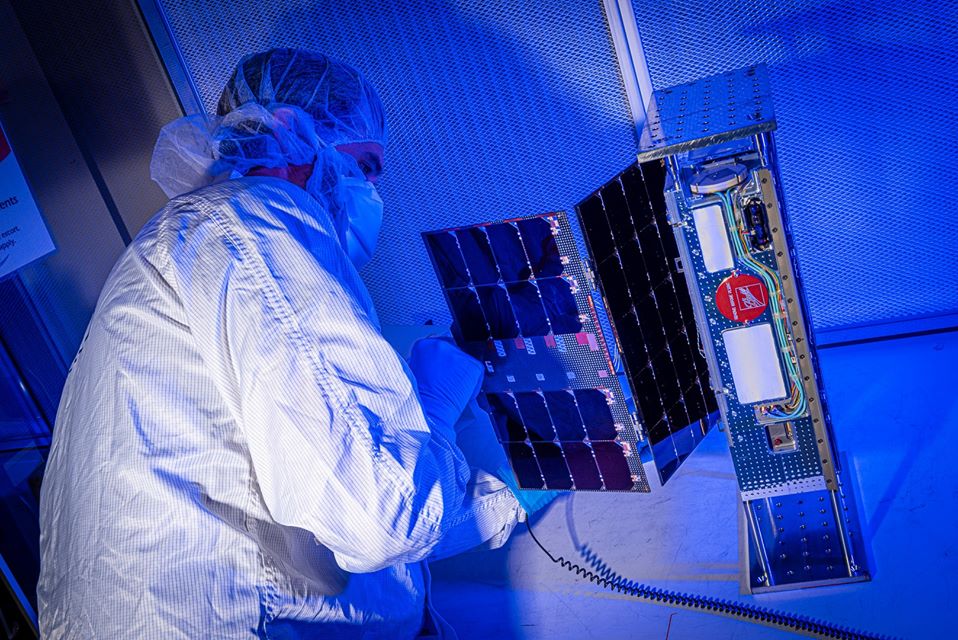CIRiS CubeSat Demonstration Paves the Way for Future Infrared Imaging Missions

Researchers put finishing touches on CIRiS prior to its launch in 2020. CIRiS features a novel bolometer that reduces the size, weight, and cost of instruments dedicated to collecting infrared images of Earth. (Image Credit: Ball Aerospace)
2/28/23 – A novel NASA-funded infrared radiometer celebrates its third year in Earth orbit in 2023, marking a new milestone for a small satellite that may make a huge impact on infrared imaging.
Developed by Ball Aerospace with support from NASA’s Earth Science Technology Office, the Compact Infrared Radiometer in Space (CIRiS) technology validation mission gathers infrared images of Earth’s surface using a new uncooled bolometer and associated calibration system.
CIRiS marks the first time these state-of-the-art systems have flown aboard a space-based instrument. Together, they allow CIRiS to produce reliable measurements without a cryogenic cooler, reducing the weight, complexity, and cost of instruments dedicated to collecting infrared images of Earth’s ground and ocean surfaces.
Infrared images are especially useful for studying things like ocean temperature, urban heat islands, and evapotranspiration – the total amount of water vapor that enters Earth’s atmosphere from evaporation and transpiration.
David Osterman, a Staff Consultant Systems Engineer at Ball Aerospace and Principal Investigator for CIRiS, explained that developing such a small radiometer required significant technology innovations
“Normally, you get high performance by larger, heavier, more massive and, frankly, more expensive and complex, hardware and engineering. I think our biggest challenge was getting the high-performance, and getting the capability to do it in that small volume,” said Osterman.
CIRiS isn’t the first space-based infrared imager, but it is one of the smallest. Weighing less than four pounds, the radiometer fits neatly within a 6U CubeSat spacecraft only slightly larger than a shoebox.
The instrument features a novel uncooled, long-wave microbolometer infrared imaging detector and an on-board calibration system with three calibration views: one that looks towards space and two that look towards flat-panels coated with vertically aligned carbon nanotubes – an extremely black substance similar to that used on NASA’s CTIM and CSIM instruments.
CIRiS could become a critical component of future NASA missions – even those beyond low Earth orbit. Two sister instruments, Lunar CIRiS and Lunar VISE CIRiS, are already committed to the Artemis program, providing researchers with calibrated infrared images of the Moon’s surface from instruments mounted on a lunar lander and a lunar rover.
But Osterman is particularly excited for what CIRiS can accomplish for Earth science. From agriculture to drought prediction, missions with CIRiS instruments could have a tangible impact on the daily lives of Earthlings around the world.
“I think the major thing is that the utility, the usefulness of CIRiS is in the optimization of the instrument for an application. We space qualified different components, like these carbon nanotube calibration sources, but a major overall theme – which has been successful – has been our optimization of the system as a whole for future applications,” said Osterman.
NASA’s In-space Validation of Earth Science Technology (InVEST) program, a part of the Earth Science Technology Office, funded this project.
Gage Taylor, NASA Earth Science Technology Office